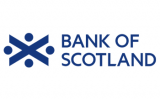
Junior Cash ISAs
Compare Junior Cash ISA Options
Compare Junior Cash ISA’s
See the table below for a selection of Junior Cash ISA savings plans and start saving for your child or grandchild’s future today:
Junior Cash ISAs
Junior cash ISAs offer each eligible child a tax-free savings account into which parents, family or friends can contribute funds to help save for the child’s future. In 2024/25, the junior ISA limit is £9,000.
Junior ISAs first become available in November 2011 to replace Child Trust Funds, which means children who were born between 1st September 2002 and 2nd January 2011 are not currently eligible for junior ISAs. There are plans, however, to allow transfers from child trust funds into junior ISAs at some point in the future.
Who can open a junior ISA?
ISAs can be opened by anyone who has parental responsibility for an eligible child. One ISA can be opened per child. Management of the ISA passes to the child when they turn 16. However, funds remain inaccessible until the child turns 18, after which they can either withdraw the funds, or have their account roll over into an adult ISA. Children who were born between 1st September 2002 and 3rd January 2011 will already have a Child Trust Fund, and are therefore not eligible for a junior ISA.
What are the junior cash ISAs rules?
In terms of rules and regulations, junior cash ISAs operate on a similar principle to regular cash ISAs:
-
Only one junior cash ISA can be held by each child at a time.
-
Unlike Child Trust Funds, junior cash ISAs don’t include any contribution from the Government.
-
You can transfer a junior cash ISA from one provider to another.
-
The 2024/25 tax year allowance for junior ISAs is £9,000. This allowance can either be put solely into a junior cash ISA or divided between a junior stocks and shares ISA and a junior cash ISA in whatever proportion you wish.
On the whole, junior ISAs are quite similar to regular adult ISAs in terms of rules and regulations. It’s important to note that the junior ISA limit can be divided between a cash ISA or a stocks and shares ISA in whichever proportion you wish – this is one of the key differences between an adult Isa and a junior ISA. You can also switch a junior ISA from a cash ISA to a stocks and shares ISA, and vice versa, something which is not permitted under the current rules for adult ISAs.
Points to bear in mind when choosing a junior cash ISA:
-
Unlike many savings accounts, the money saved in a junior cash ISA stays tax-free once the child reaches adulthood. If the child decides to keep the cash in the account once they reach 18, it will automatically be converted to a regular ISA. While any non-ISA savings you make in your child’s name may be tax free now (see above), they will lose their tax free status once your child reached adulthood and starts earning an income which takes them over the income tax threshold. There’s nothing to stop your child moving their money into an ISA then – but they’ll only be able to transfer a maximum of one year’s ISA allowance, and any additional savings will be subject to tax.
-
If you want to save an annual amount for your child that generates over £100 in yearly interest, a junior ISA may be a good way to ensure this isn’t taxed and ensure that your child gets the most from their tax-free savings allowance each year.
-
Contributions are very flexible – you can save as much or as little as you want (up to the annual allowance of £9,000), as regularly or infrequently as you want.
-
The money is locked away for a set period, which means that you can’t access it to use as an emergency fund. Therefore, it’s important to only put away what you can afford.
-
If your child already has a Child Trust Fund, they aren’t eligible for a junior ISA (although transfers may become available in the future).


